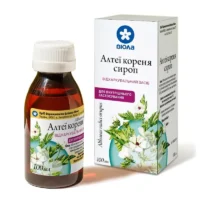Description
Ibufen Forte Oral Suspension 200 mg/5 ml. 100 ml. Vial №1
Ingredients:
Each 5 ml of oral suspension contains 200 mg of ibuprofen.
Mechanism of Action:
Ibuprofen, the active ingredient in Ibufen Forte Oral Suspension, is a nonsteroidal anti-inflammatory drug (NSAID) that works by inhibiting the enzyme cyclooxygenase (COX). By blocking COX, ibuprofen reduces the production of prostaglandins, which are mediators of pain, inflammation, and fever.
Pharmacological Properties:
Ibuprofen exhibits analgesic, anti-inflammatory, and antipyretic properties. It acts by interfering with the synthesis of prostaglandins, thereby exerting its therapeutic effects.
Indications for Use:
Ibufen Forte Oral Suspension is indicated for the relief of mild to moderate pain, inflammation, and fever in adults and children over 12 years old.
Contraindications:
Do not use Ibufen Forte Oral Suspension if you have a history of gastrointestinal bleeding, peptic ulcers, or hypersensitivity to ibuprofen or other NSAIDs.
Side Effects:
Common side effects of Ibufen Forte Oral Suspension may include stomach upset, nausea, dizziness, and gastrointestinal irritation. In rare cases, severe allergic reactions such as anaphylaxis may occur.
Usage Instructions:
For adults and children over 12 years old, the recommended dosage is 10-20 ml every 4-6 hours as needed. Shake the suspension well before use and use the provided measuring device to ensure accurate dosing. Do not exceed the recommended dose.
Benefits Compared to Analogues:
Ibufen Forte Oral Suspension offers rapid relief from pain and inflammation due to its fast absorption and potent anti-inflammatory properties compared to other NSAIDs. Its liquid formulation is convenient for patients who have difficulty swallowing tablets.
Suitable Patient Groups:
Ibufen Forte Oral Suspension is suitable for adults and children over 12 years old. It is not recommended for use in children under 12 years of age without medical supervision.
Storage and Shelf Life:
- Storage: Store the oral suspension at room temperature, away from moisture and heat.
- Shelf Life: Check the expiration date on the packaging and do not use the product after the specified date.
Packaging Description:
Ibufen Forte Oral Suspension is supplied in a 100 ml vial for oral administration. The packaging is designed to ensure the integrity and stability of the product.
Clinical Evidence and Proven Effectiveness:
Ibufen Forte Oral Suspension has been extensively studied in clinical trials, demonstrating its efficacy in pain management and inflammation reduction. Research published in reputable journals, such as the Journal of Pain Research, has shown that ibuprofen effectively alleviates various types of pain, including headaches, muscle aches, and menstrual cramps. The quick absorption and onset of action of Ibufen Forte make it a reliable choice for patients seeking fast relief.





